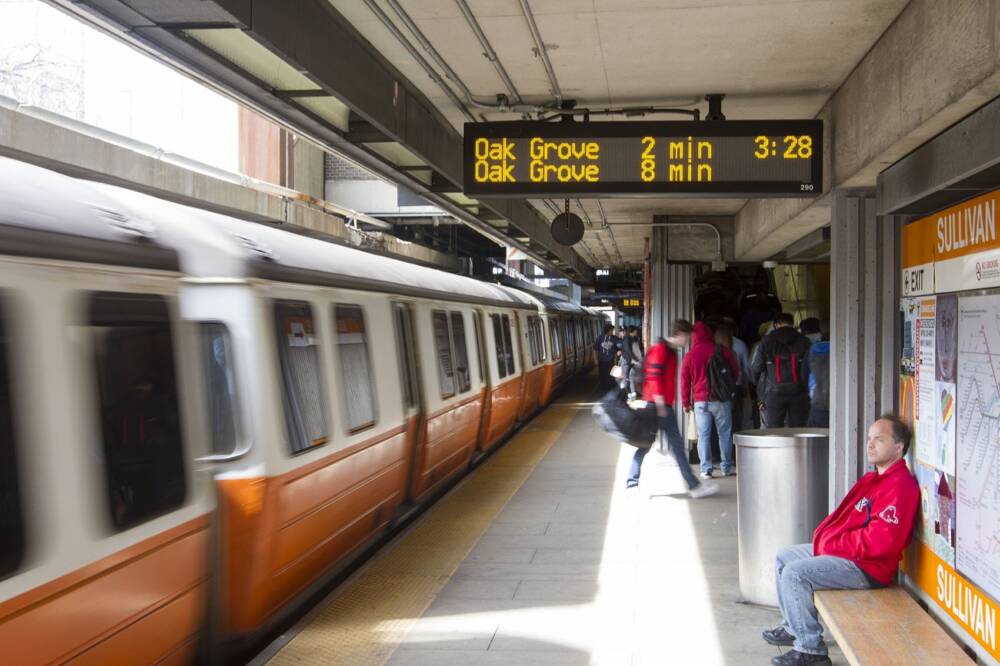Advertisement
Boston's Morning Newsletter
The MBTA needs a lot more workers. Here's how they're trying to attract them

Editor's Note: This is an excerpt from WBUR's daily morning newsletter, WBUR Today. If you like what you read and want it in your inbox, sign up here.
Do you want to work at the MBTA? No? They could really use the help. What if they toss a few extra thousand bucks your way?
Faced with a “stunning” labor shortage in a competitive job market, the T is stepping up its efforts to attract new workers. The plan includes increasing its sign-on bonus by $3,000 and expanding the number of positions eligible for the upfront money.
- Currently, the T is offering a $4,500 signing bonus for new bus drivers. But beginning April 15, they’re upping the offer to $7,500 and expanding it to six other positions: subway and streetcar drivers, rail repairers, track laborers, service technicians and fuelers. (The T is also offering to cover the cost of a commercial driver’s license for new bus drivers, an over $10,000 value.)
- Now you’re listening? Check out the T’s job website for more information. They’re also holding four recruitment fairs around Greater Boston later this month.
- The big picture: The shortage of subway operators has emerged as a key issue holding back service, after the MBTA was forced to slash train trip frequency across most of the system last summer. (At the time, a shortage of dispatchers was the main problem.)
- Will the new bonuses be enough to help? Unclear. The hiring push comes a day after a report by the Massachusetts Taxpayers Foundation estimated that the T needs to hire another 2,800 workers (or roughly 50% of its current headcount). To meet that goal, the group said the T will need more help from the state’s Legislature.
Speaking of aging infrastructure: Boston city councilors expect to get an update today on the safety of the city’s public infrastructure during a hearing this afternoon. This was sparked after a woman was hit by a falling street light in the Seaport last fall. Since then, crews have been inspecting the rest of the city’s light poles, bridges and other public works.
- City Council President Ed Flynn says Boston’s winters and proximity to the ocean creates added wear for infrastructure.
A go-to Cape Cod beach party spot is going dry this summer. In an effort to crack down on disorderly “drunken behavior,” officials are banning alcohol consumption and open containers on Cahoon Hollow Beach this year from May 20 to Sept. 10, according to Cape Cod National Seashore chief ranger Michael Valora.
- The move comes after traffic to the beach — located by the popular Beachcomber restaurant in Wellfleet — increases 20% each year since 2017, with many people chartering buses or taking Ubers and Lyft to get there, according to the Provincetown Independent. Local police told town leaders that the partying has “resulted in an increase of excessive alcohol consumption, disorderly conduct, public intoxication and improper disposal of human waste.”
- FYI: While alcohol is generally prohibited on public beaches in Massachusetts, you can still drink on other Cape Cod National Seashore beaches. “This regulation change is only for Cahoon Hollow,” Valora said.
- Back in Boston: Meanwhile, don’t expect a ban on mini-alcohol bottles in the city to take effect anytime soon. The proposal got mixed reviews from health officials and liquor store owners during a City Council hearing yesterday. Flynn says he wants to get an economic assessment before moving forward on the issue.
The MBTA isn’t the only one with slow zones. Federal officials are extending two “slow zones” for boats south of Martha’s Vineyard and Nantucket until April 15 due to the presence of rare, migrating right whales in the area. Boaters are asked to keep it below 10 knots (or 11.5 mph) to reduce the chances of deadly whale strikes.
- Scientists estimate there are now more than 80 right whales swimming through Cape Cod Bay (almost 25% of the critically endangered species’ global population). “It’s a very special time in a tiny bay with very high concentrations,” said Stormy Mayo, a co-founder of the Center for Coastal Studies.
P.S.— In the nearly 10 years that have passed since the 2013 Boston Marathon bombing, WBUR photographers Jesse Costa and Robin Lubbock have returned to the finish line — and to the victims and their families — to capture the community’s resilience. Some of their images are now on display in a new exhibit in the CitySpace windows at 890 Commonwealth Ave. Take a peek here as Costa and Lubbock discuss the stories behind the photos.
